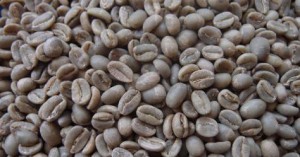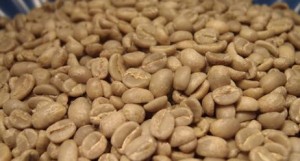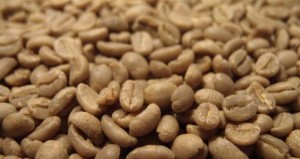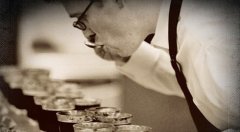Brief introduction of Ethiopian Coffee the hometown of Arabica Coffee
Lim G2
Ethiopia is the hometown of Arabica coffee, and it is in the forests of Kaffa that you can see wild Arabica coffee. In Ethiopian, coffee is called "Bun" or "Buna". Coffee beans (coffee bean) may be translated from "Kaffa Bun". Arabica coffee has long been found in the Harald area, probably from the Kafa forest.
Essel coffee is processed by two processing methods: sun and water washing. The flavor of coffee processed by different processing methods is very different. Generally speaking, the alcohol thickness and soil taste of washed Sidamo, Yirgacheffe and Limmu coffee are slightly lower, and the taste of sun-processed coffee is more wild. But Essex coffee may taste different from batch to batch, which requires more cup tests in order to find really good coffee.
With regard to the grade of Ethiopian coffee: the highest grade of Ethiopian coffee Yega Xuefei and Yirgacheffe and Sidamo may be level 2 or 3 (G2 or G3), and most of the sun-processed coffee in eastern Ethiopia is grade 4 or 5 (G4, G5). In many cases, level 4 coffee is marked as level 5 in order to reduce taxes. At present, the grading is not uniform and messy, because there are also first-and second-tier (Grand G2) Yega Xuefei Coffee (Yirga Cheffe) processed by sun processing, but the highest grade of Harald (Harar) is Grade 4 (G4) (data: sweetmaria).
The coffee producing areas of Ethiopia are Hidamo, Harald and Sidamo, Harrar and Yirgacheffe. Sidamo and Harrar are provinces and divisions, Sidamo is located in the south of Ethiopia bordering Kenya, and Harrar is bordering Somalia in the east of Ethiopia. Although Yirgacheffe is a community in the Sidamo region, its coffee is considered to be the best in Ethiopia because of soil composition and water content.
In the West, Ethiopian coffee is generally sold on the market as Yega Xuefei, Hidamo and Harald (Yirgacheffee, Sidamo and Harrar). In the field of boutique coffee, there are five other small places of coffee, namely, Lim, Jima, Le Campdi, Becca and Limmu, Djimmah, Lekempti, Bebeka and Wolega. The most common is Essehidamo or Harald coffee (Either Sidamo or Harrar coffee).
Harald Coffee (Harrar Coffee) comes from the eastern highlands of Ethiopia, with medium bean size, green yellow, medium acidity, full alcohol thickness and typical mocha flavor (mocha flavor). It is one of the most famous coffee in the world. Wollega (Nekempte) coffee comes from the west of Ethiopia, with medium to large beans and is famous for its fruity flavor. The color is green and brown (greenish, brownish color), and the acidity and alcohol thickness are good. Can be made to match, can also be individual products. Limu Coffee coffee is famous for its aroma and wine taste (spicy and Winnie flavor) and is very popular in Europe and the United States. The acidity and alcohol thickness are good, and the water-washed lim coffee is also the favorite of fine coffee. The bean shape is medium, greenish blue, mostly round. Sidama Coffee coffee has medium bean shape and green gray. Hidamo washed coffee is known as sweet coffee (sweet coffee) with balanced taste and flavor. It has fine acidity and good alcohol thickness. It is produced in the south of Ethiopia and can be mixed with boutique products. Yirgacheffe Coffee has a strong floral flavor. Washed Yega Chuefei is one of the best high-estate coffee in the world with soft acidity and rich thickness. Tepi and Bebeka coffee, with low acidity but high alcohol thickness, are indispensable members of blended coffee (data: ethiopian).

Harald G4

Hidamo G2

Lim G2

Jima G5

Important Notice :
前街咖啡 FrontStreet Coffee has moved to new addredd:
FrontStreet Coffee Address: 315,Donghua East Road,GuangZhou
Tel:020 38364473
- Prev

Common sense of etiquette of coffee! How to add sugar to the coffee?
1. How to get a coffee cup? The coffee you drink after a meal is usually served in a pocket cup. The ear of this kind of cup is so small that you can't get your fingers out. But even if you use a larger cup, don't put your finger through the ear and carry the cup. The correct way to hold a coffee cup is to hold the handle of the cup by your thumb and forefinger and then pick up the cup. two。 How to add sugar to the coffee? When adding sugar to the coffee, the sand
- Next

Harald's bitterness and the Flavor description of Gan Fine Coffee beans
Harald is always reminiscent of one of the four holy cities of Islam, BMW of pure blood, and delicious coffee-a name that shines loudly in the coffee world, and you can't turn a blind eye to it. However, Harald's first impression may not be so impressive. The plain-looking raw beans are hardly reminiscent of those gorgeous words: berry flavor, fruit aroma
Related
- Detailed explanation of Jadeite planting Land in Panamanian Jadeite Manor introduction to the grading system of Jadeite competitive bidding, Red bid, Green bid and Rose Summer
- Story of Coffee planting in Brenka region of Costa Rica Stonehenge Manor anaerobic heavy honey treatment of flavor mouth
- What's on the barrel of Blue Mountain Coffee beans?
- Can American coffee also pull flowers? How to use hot American style to pull out a good-looking pattern?
- Can you make a cold extract with coffee beans? What is the right proportion for cold-extracted coffee formula?
- Indonesian PWN Gold Mandrine Coffee Origin Features Flavor How to Chong? Mandolin coffee is American.
- A brief introduction to the flavor characteristics of Brazilian yellow bourbon coffee beans
- What is the effect of different water quality on the flavor of cold-extracted coffee? What kind of water is best for brewing coffee?
- Why do you think of Rose Summer whenever you mention Panamanian coffee?
- Introduction to the characteristics of authentic blue mountain coffee bean producing areas? What is the CIB Coffee Authority in Jamaica?

